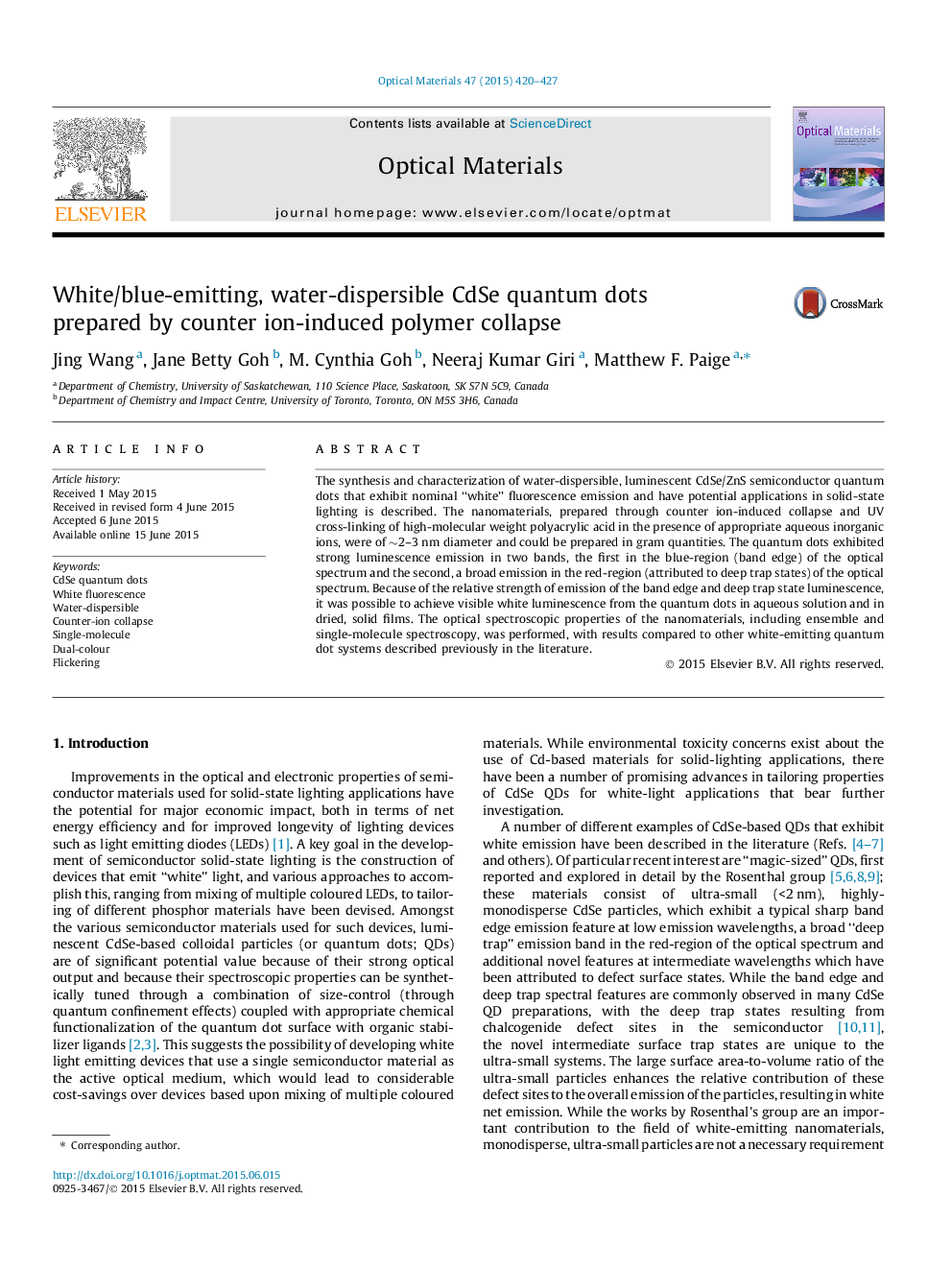| Article ID | Journal | Published Year | Pages | File Type |
|---|---|---|---|---|
| 1493735 | Optical Materials | 2015 | 8 Pages |
•CdSe quantum dots prepared using an aqueous, polymer-based synthesis.•White luminescence results from combination of core and trap state emission.•Spectral properties show promise for white-lighting applications.
The synthesis and characterization of water-dispersible, luminescent CdSe/ZnS semiconductor quantum dots that exhibit nominal “white” fluorescence emission and have potential applications in solid-state lighting is described. The nanomaterials, prepared through counter ion-induced collapse and UV cross-linking of high-molecular weight polyacrylic acid in the presence of appropriate aqueous inorganic ions, were of ∼2–3 nm diameter and could be prepared in gram quantities. The quantum dots exhibited strong luminescence emission in two bands, the first in the blue-region (band edge) of the optical spectrum and the second, a broad emission in the red-region (attributed to deep trap states) of the optical spectrum. Because of the relative strength of emission of the band edge and deep trap state luminescence, it was possible to achieve visible white luminescence from the quantum dots in aqueous solution and in dried, solid films. The optical spectroscopic properties of the nanomaterials, including ensemble and single-molecule spectroscopy, was performed, with results compared to other white-emitting quantum dot systems described previously in the literature.
Graphical abstractFigure optionsDownload full-size imageDownload high-quality image (121 K)Download as PowerPoint slide
